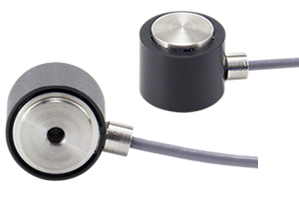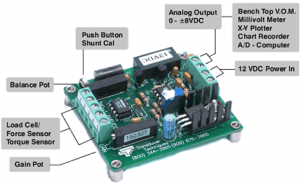Our Engineers have Applied the Latest Technology in Load Cell Amplification

CAL-TEDS Plug & Play Smart Sensors Icon

MLC Series Load Cell and TMO-1 Amplifier

MLC Series Load Cell
Successful combination of MLC Series Mini Load Cell and TM0-1 Load Cell Amplifier gives engineers more options
TEMECULA, CALIFORNIA, UNITED STATES, February 13, 2021 /EINPresswire.com/ — New from Transducer Techniques an economically priced System combination, comprising of our popular MLC Series, Mini Load Cell Load Column Compression Only, and our TMO-1, 12 VDC powered Load Cell Amplifier / Conditioner Module. The TMO-1 provides dedicated conditioning and several units can be powered from a common power supply. Balance and span pots are low tempco metal film for long-term stability and good resolution. The Mini Load Column compression load cell (compression only) is structed from stainless steel and is offered in a variety of ranges from 2,000 LBS. to 30K LBS. The MLC’s are designed to be mounted in a shallow machined flat pocket or smooth flat surface, either free or fastened via a bottom 6-32 tapped hole. Accuracies are consistent with highly accurate strain gauge load cells.
Transducer Techniques, established in 1979, designs and manufactures a complete line of load cells, torque sensors, special purpose transducers and related instrumentation. Transducer Techniques load cells are uniquely designed for weight and force measurement in such diversified applications as process control and factory automation. Other applications exist in numerous fields of science and industry for our load cells. All transducer sensing elements incorporate bonded foil strain gauges, wired in a full Wheatstone bridge configuration.
Technology
Load cells are electro-mechanical transducers that translate force or weight into voltage. This change in voltage produces a signal in the read-out instrumentation, a repeatable deflection or indication that can be calibrated directly in terms of the load applied to the load cell.
Construction
Construction of the load cell utilizes all the advantages of bonded foil strain gauges. Sealed within the load cell are sets of matched strain gauges bonded to a high strength element, machined to close tolerances. The strain gauges are electrically connected to form a balanced Wheatstone bridge and additional compensation resistors are added to the circuit for maintaining the accuracy of the bridge over a wide temperature range.
Operation
The principle of operation depends upon the deflection of the strain gauge filament, creating a change in its resistance, thereby unbalancing the bridge circuit. As a result, for a given input voltage, the output voltage of the bridge varies proportionally with the load and the change can be read on appropriate instrumentation.
Quality
When completed, each load cell is individually tested and calibrated. Each cell must meet or exceed rigid electrical and mechanical performance tests before it is released for service. Also, every cell is proof tested to its full rated capacity, and in most instances, to over its rated capacity.
Attributes
An important asset of our load cells is their extremely small deflection. The maximum deflection of standard cells does not exceed .012″ at full load. This plus the fact that these load cells contain no moving parts opens unlimited application fields. The inherent compactness of the load cells minimizes installation problems.
The frequency response characteristics of our load cells are exceptionally good. The relatively low mass, and the small deflection under load, result in a high-frequency response which emphasizes the use of the load cells in many services where other transducers cannot perform.
Only strain gauges of the highest quality are installed and configured by technicians who have undergone our extensive training program targeting craftsmanship and attention to detail. To the end-user, this means a quality product. All Load Cells / Force Sensors and Torque Sensors are supplied with a Calibration Certificate traceable to NIST
https://www.transducertechniques.com
Customer Support
Transducer Techniques, LLC
+1 800-344-3965
email us here
Visit us on social media:
Facebook
Twitter
![]()

